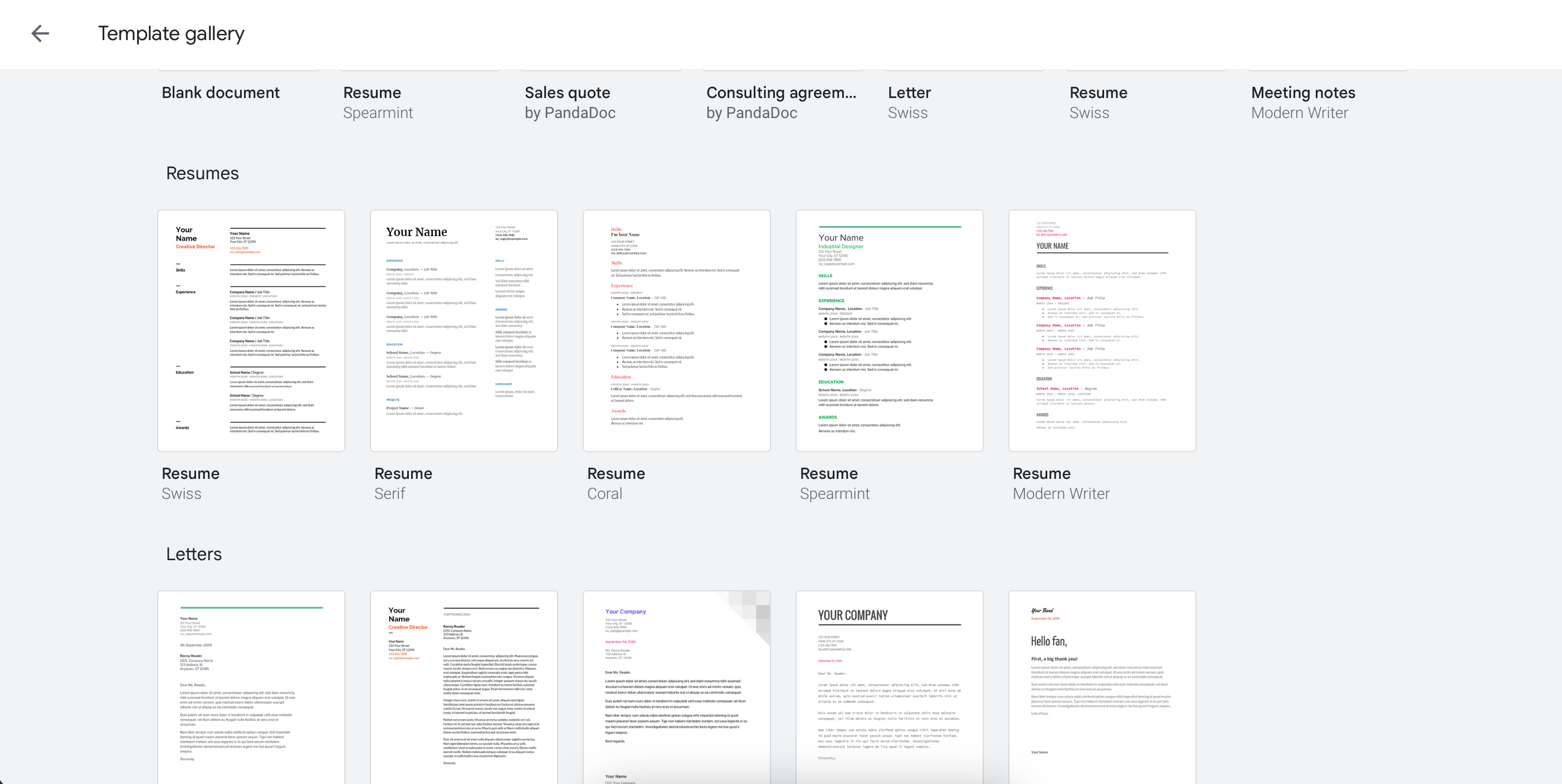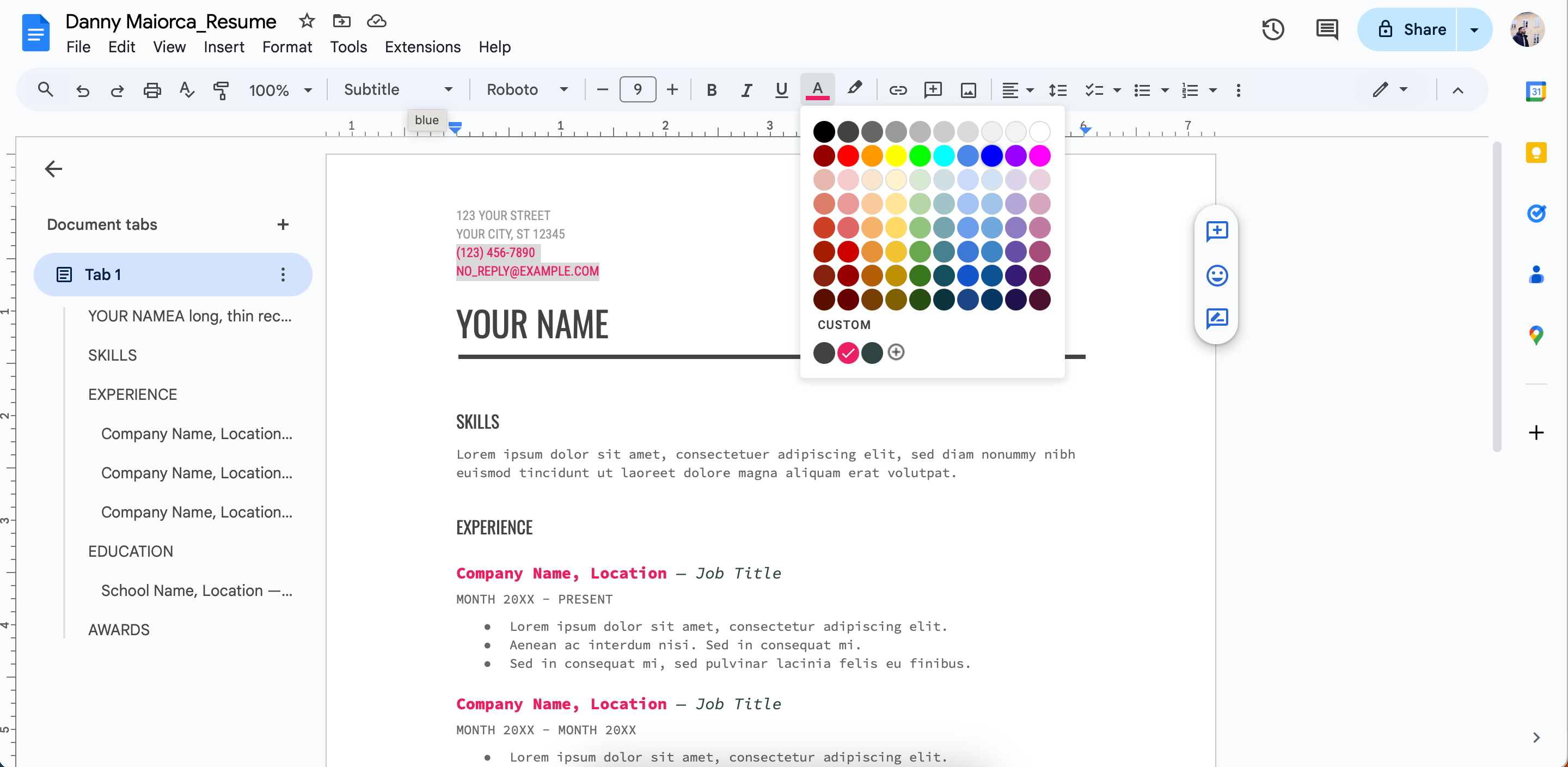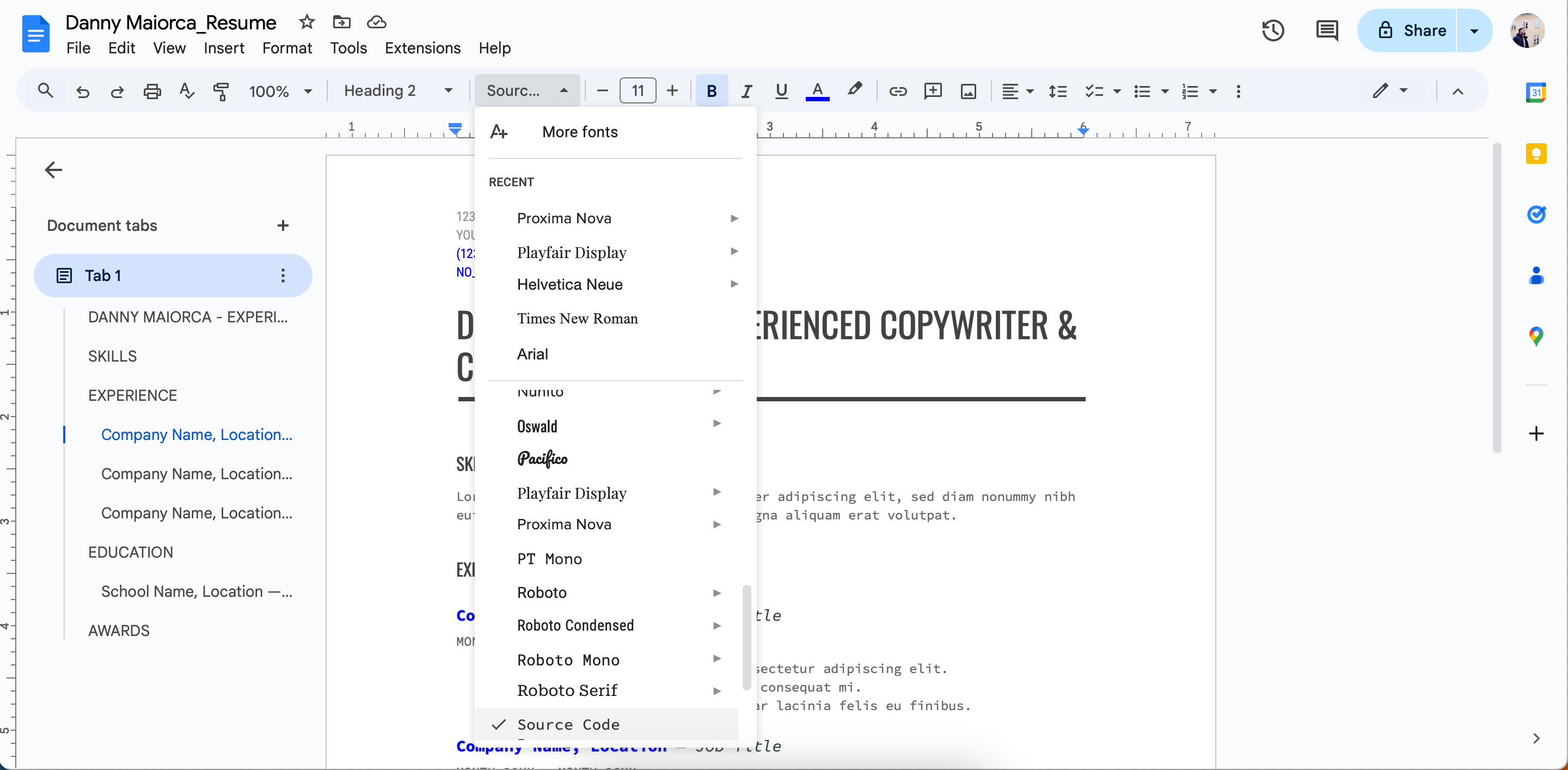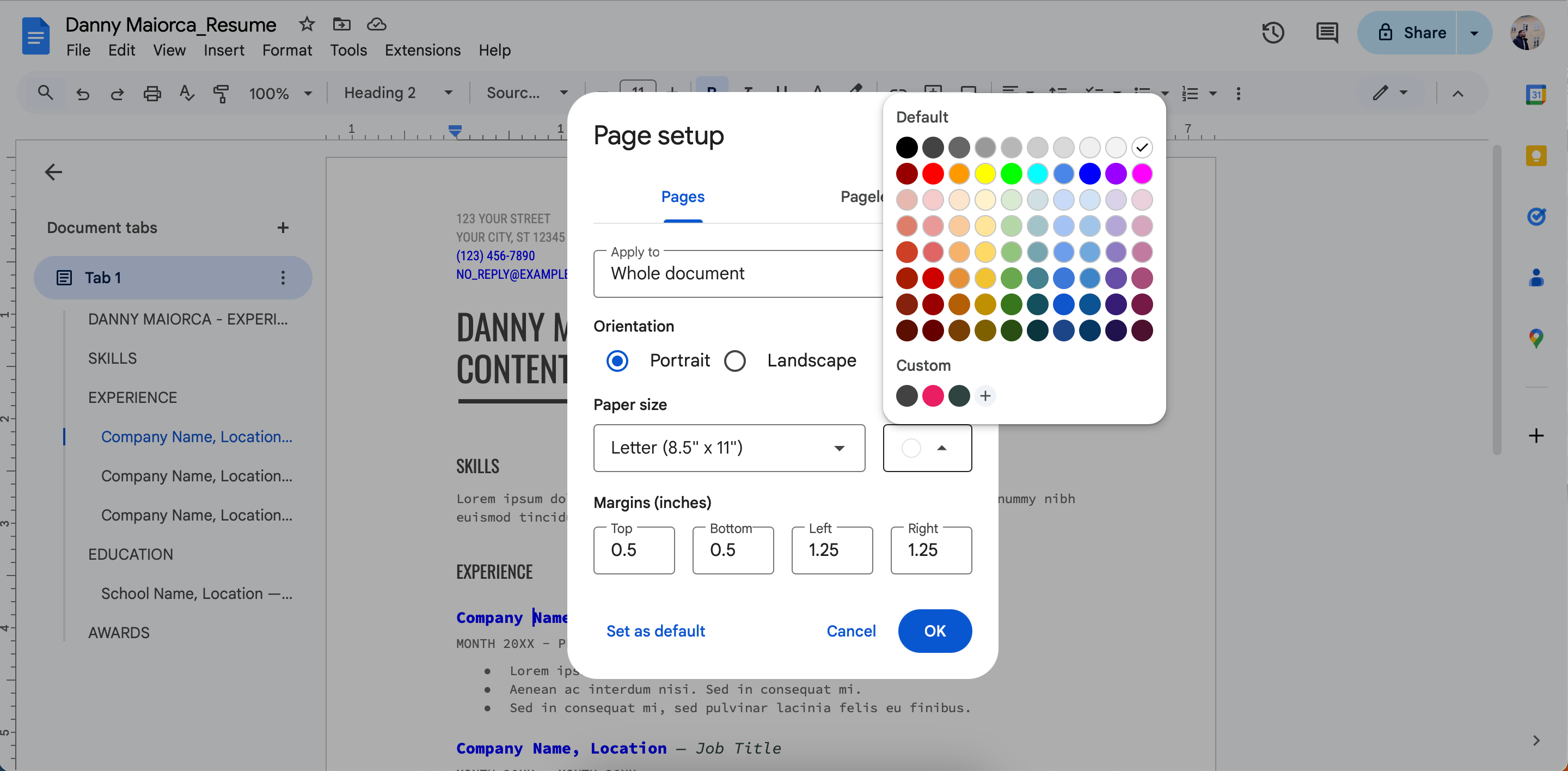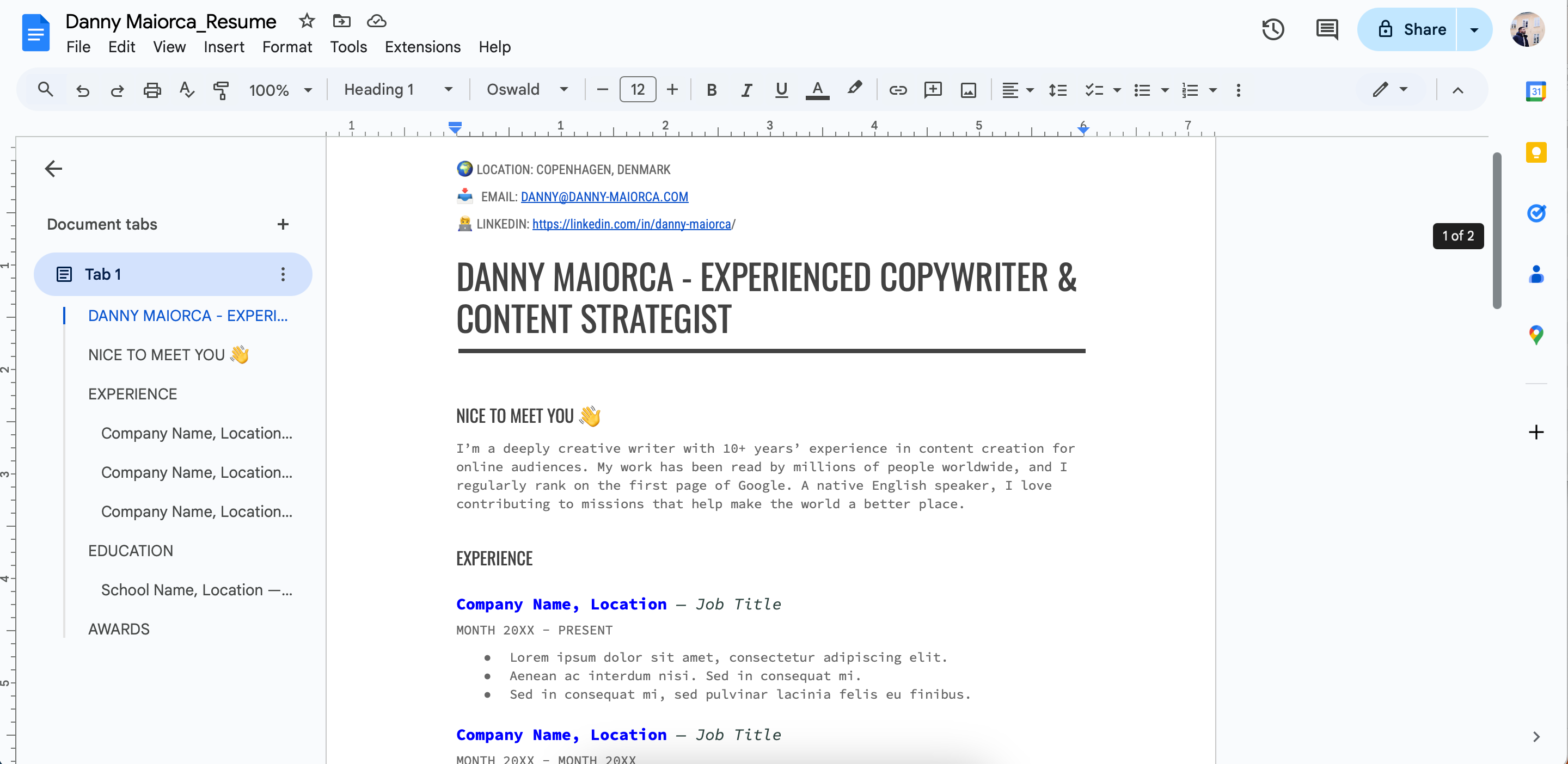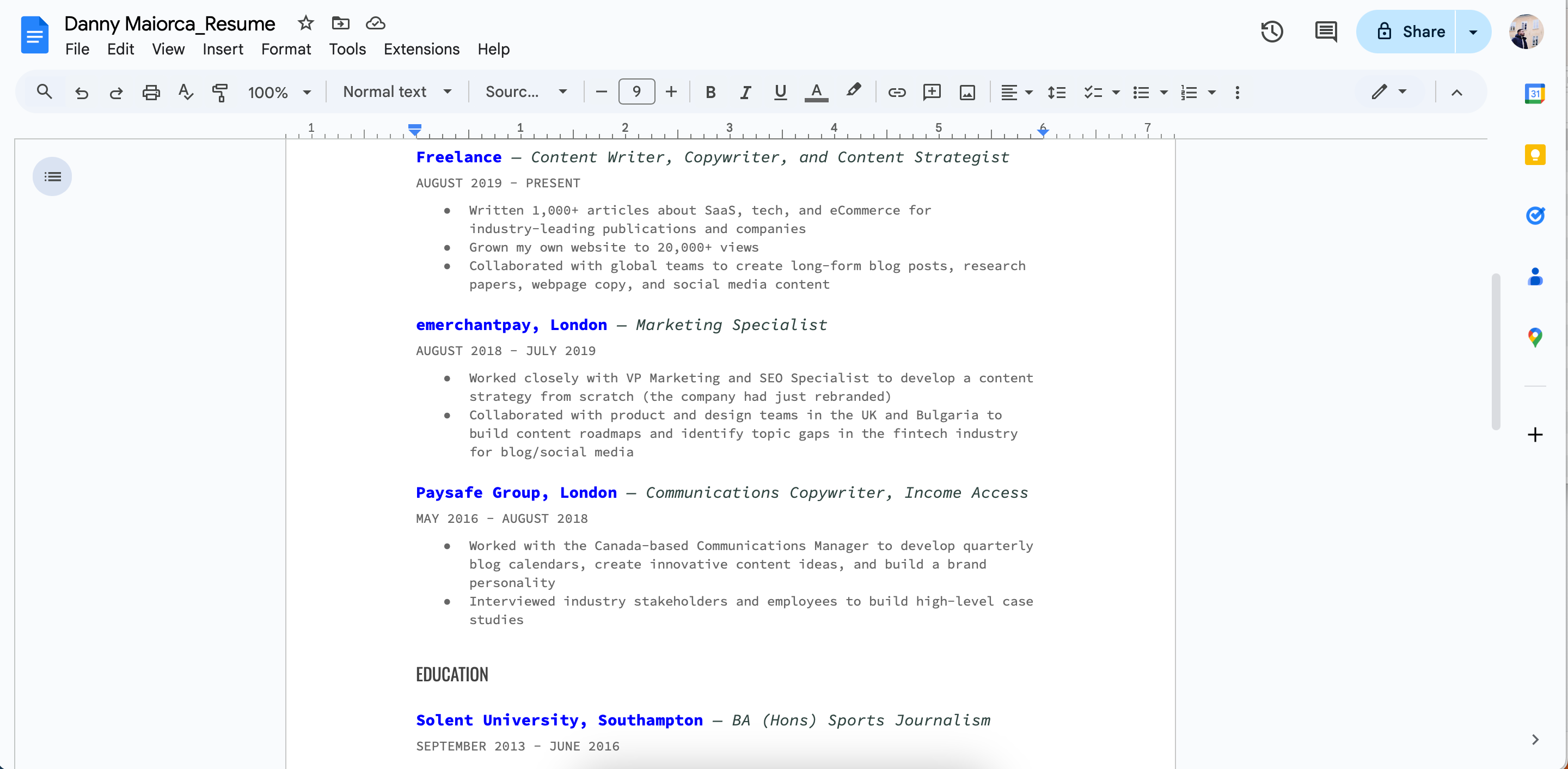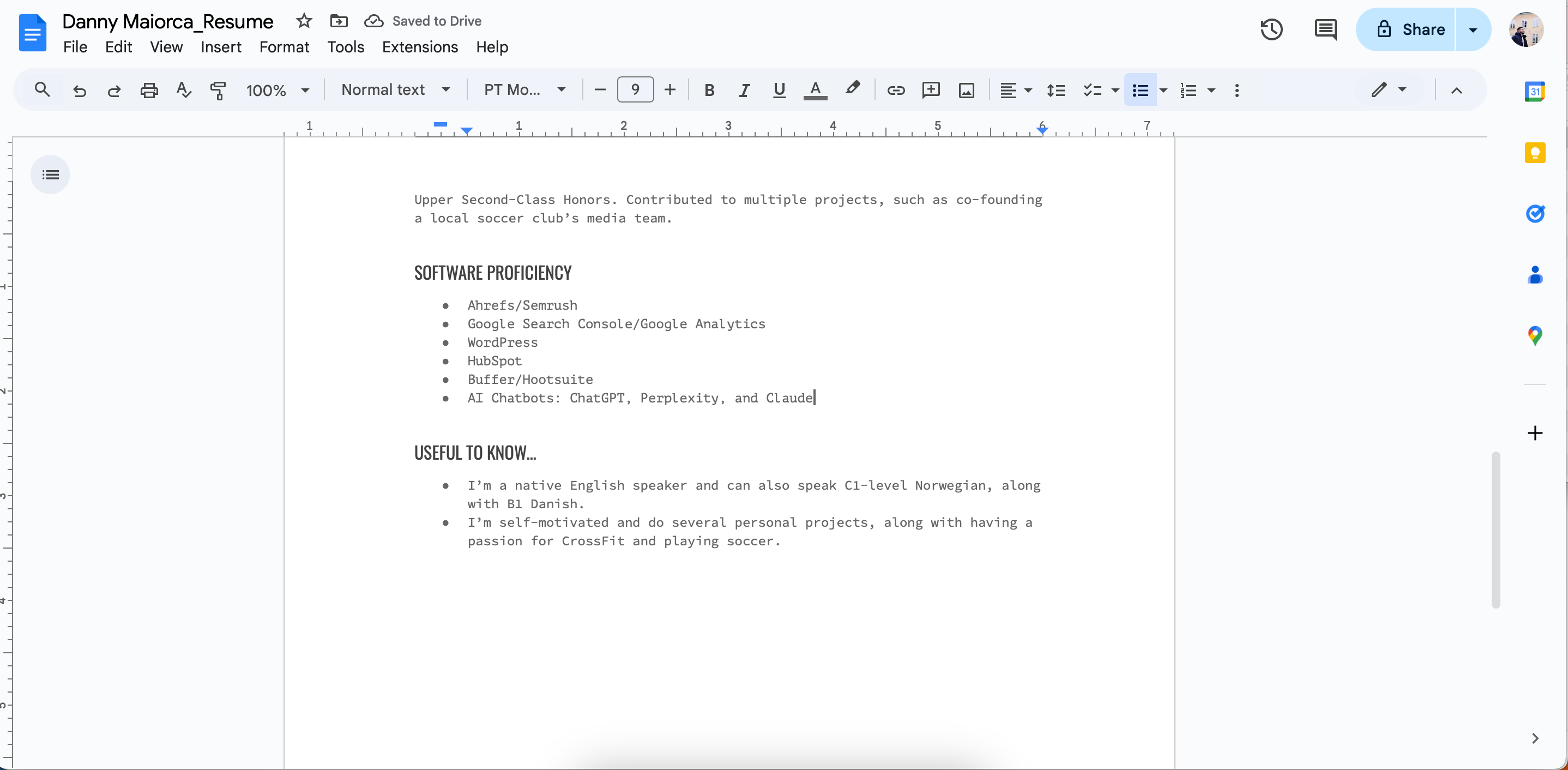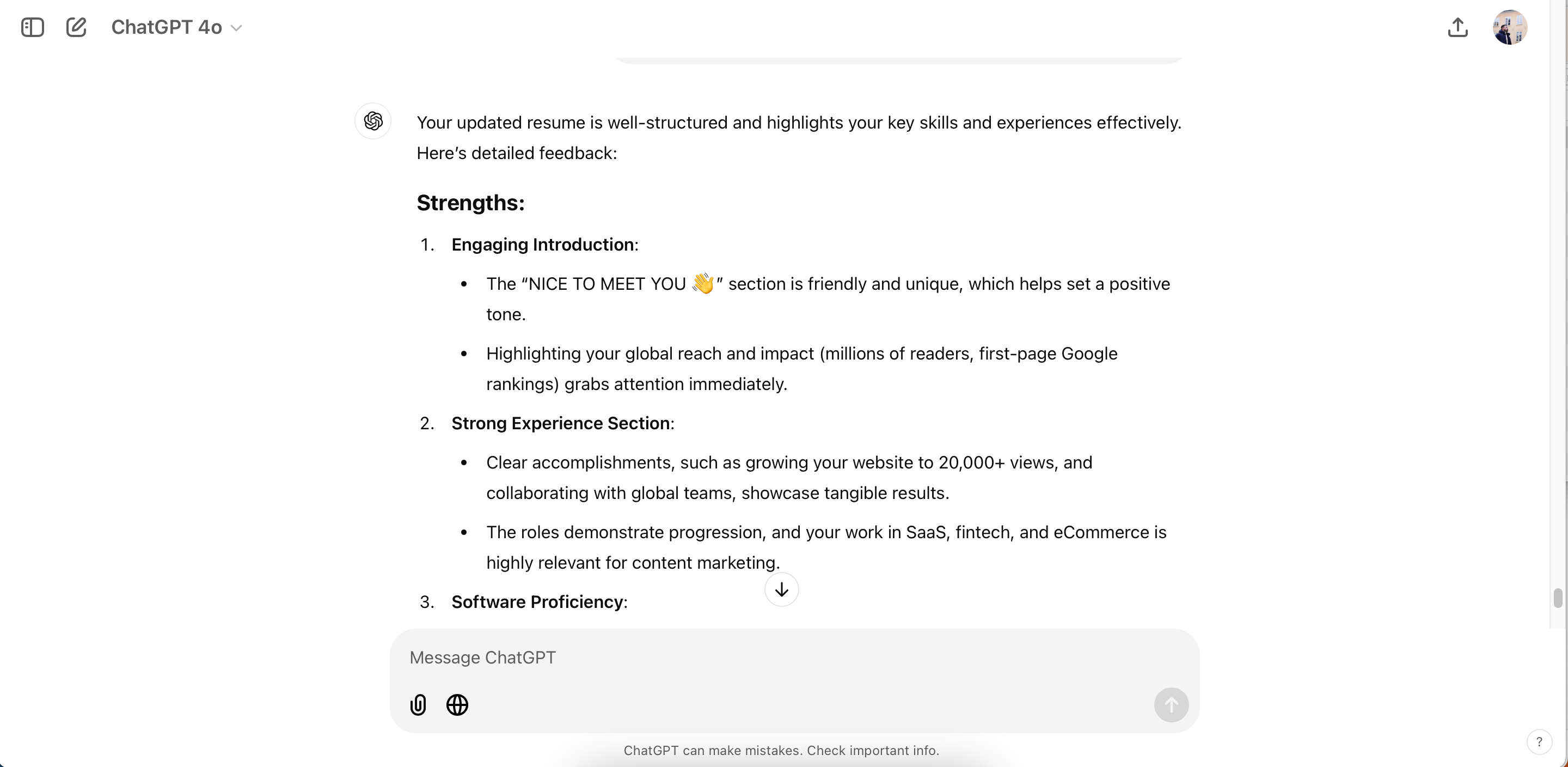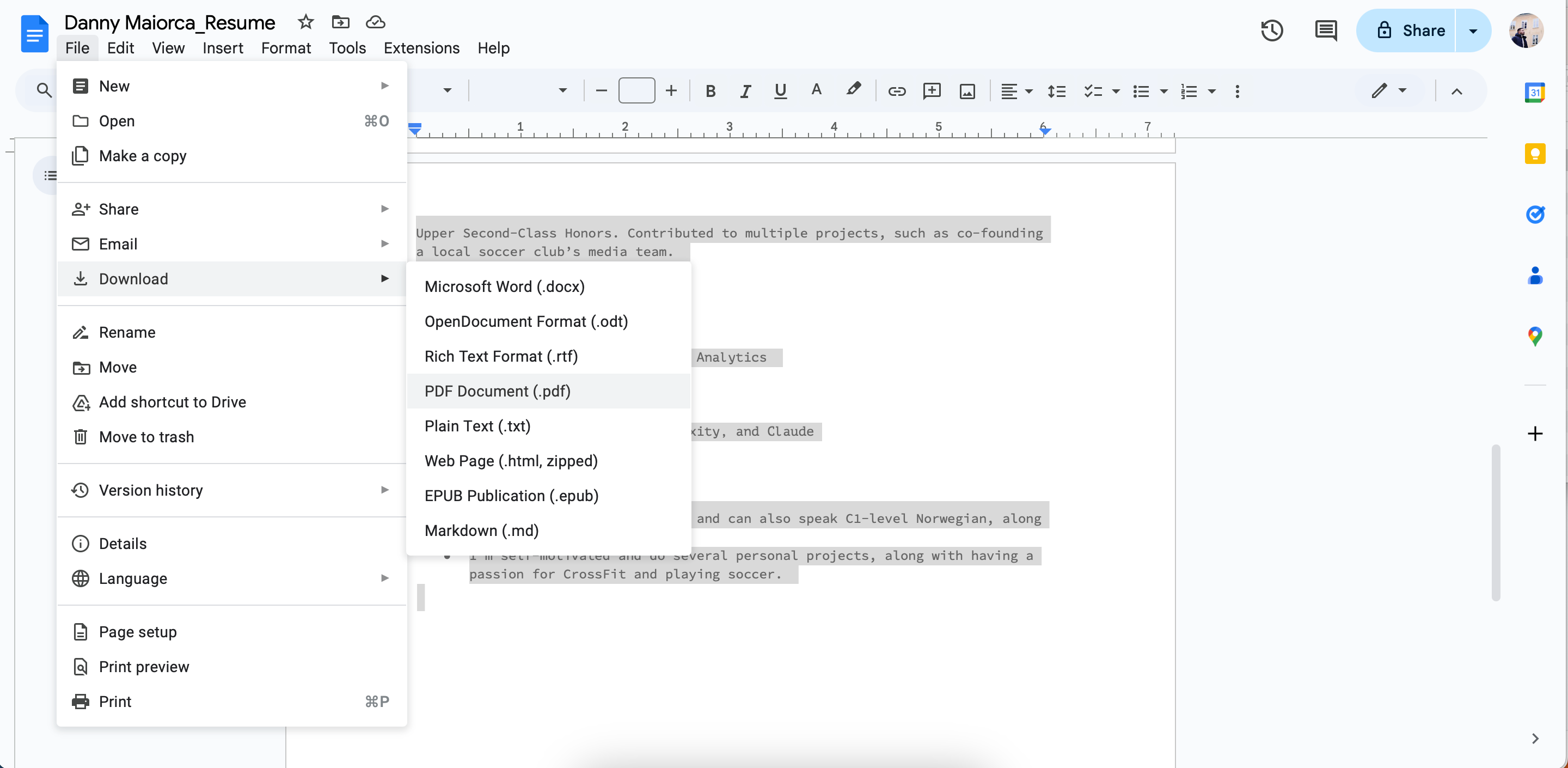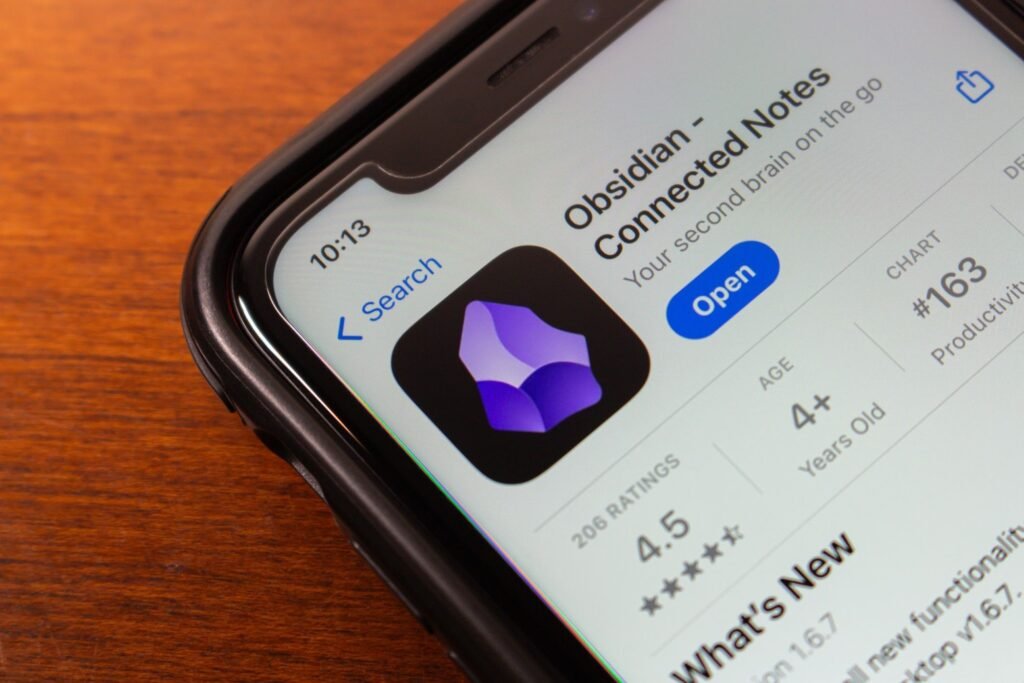Your resume is often the first impression you make on potential employers, so it needs to stand out for all the right reasons. Google Docs makes creating a professional-looking resume easier than ever. I’ve relied on it to land multiple jobs, and its simplicity has consistently helped me craft resumes that leave a lasting impact.
1
What to Include in Your Resume
I think that most online advice about creating a resume is not very good. To be honest, I threw most of what I learned out the window (and, funnily enough, got better results when doing so). But while some aspects are subjective, I do have three non-negotiables that go into every resume I create.
1. Key Work Experience
Whether you’re applying for a full-time or freelance role, the company hiring you needs to know how you’ll be a good fit. I always include my most important work experience, but since I’ve been a professional writer for almost a decade, I don’t add everything.
To determine what’s important, I thoroughly read a job description or research the company’s website. I’ll then draw up my work experience to see where I can meet the company’s needs. Rather than just listing my roles and responsibilities, I also look at results I’ve achieved and add these (as long as they aren’t part of an NDA that I’ve signed).
After coming up with what I think will make me a viable candidate, I then use ChatGPT to help me write my resume. I’ll run my bullet points alongside the job description and ask the tool to give me feedback. You can use Perplexity or Claude if you don’t like using ChatGPT.
2. Contact Information
Putting any effort into my resume is pointless if I don’t give the hiring manager a way to contact me, and for this reason, I always include my email address at the top of my resume.
I used to add my mobile number, but since most of my work is online these days, it’s pretty pointless. Nonetheless, if you’re looking for a job in your hometown, you may also want to include this. I never include my home address because if my resume falls into the wrong hands, I could potentially dox myself.
3. Core Skills
Whereas many companies used to hire people on their skills alone, company culture has become much more important. For this reason, I think it’s very important to list your most important soft and hard skills.
I also list software I’m proficient in that may relate to my role. For example, as a writer, I am familiar with Google Analytics and Ahrefs. While these tools are not directly related to writing, employers appreciate it when candidates have experience using them.
Listing relevant in-demand soft skills, such as critical thinking, is also important. I also suggest adding a personal introduction of around three sentences at the top of your resume.
Once I’ve outlined each of these areas, I then move to Google Docs and begin putting together my resume. Let’s now walk through the process.
2
Choosing a Template
I enjoy adding a touch of creativity to my resume to make it visually appealing and reflect my personality. Choosing a template is the best way to do this, and Google Docs has a handful. Go to Template Gallery > Resumes to pick one; in this example, I’m going to choose Modern Writer’s resume template.
Some of the non-resume-specific templates in Google Docs, such as the onboarding notes and lesson plan options, are also good for creating resumes.
3
Changing the Fonts, Colors, and Background
My resume-creation process is very similar to my photo-editing workflow; I normally start with the basics before getting into the more granular details. By doing things this way, I normally find it easier to create everything thereafter.
I normally choose a neutral color for general resumes. However, if I apply for a specific opening, I often brand my resume in the company’s colors. In this example, I’m going to change the pink writing to blue; to do this, I highlighted the text and went to the Text color icon.
I’m not going to change the font because I like this resume template, but to do this, just go to the font dropdown menu and choose your new one.
I will also keep the background color as it is. However, I tend to change this on other templates.
- Go to File and select Page setup.
- Expand Page color and choose your preferred background color.
4
Grouping the Most Important Information
After editing the design, I’m ready to start beefing up my resume. I changed the Skills section at the top for a brief introduction that complements other application documents, such as writing a cover letter.
It’s then time to move on to my work experience area. I don’t think it matters here if you use chronological order or not; if you choose not to, it’s a good idea to remove the dates. The most important thing, in my opinion, is to move what’s most relevant to your application to the top. I recommend focusing on results and using no more than three bullet points.
You’ll need to decide for yourself how important adding your education is. If you’re applying for a job as a surgeon, it should probably be close to the top of your resume. I’d also add the degree close to the top if you studied at a prestigious university. But if you’re a creative (e.g. a writer or photographer), I don’t think it’s anywhere near as important (and I’m speaking from personal experience).
5
Adding “Nice-to-Know” Details
While many people tell you to keep your resume to one page, I think it’s okay to go over this slightly. However, everything you add must be relevant; one-and-a-half pages should be the maximum.
For the “nice-to-know” details, I’ll sometimes add achievements related to what I’m applying for. You might also want to add a few fun facts about yourself. These can just be a couple of simple bullet points.
6
Reviewing and Exporting
After putting together my resume, I’ll then ask ChatGPT for its thoughts. Then, I’ll go back to Google Docs and make any necessary adjustments. Moreover, I’ll fact-check to ensure that I haven’t gotten any job descriptions, etc., wrong.
Next, I review the document using Grammarly to catch any typos. And finally, I export in PDF format by going to File > Download > PDF Document (.pdf). The file is then ready to attach to any applications or emails.
Google Docs makes it very easy to create a resume, and I think it’s the perfect tool for anyone who needs a user-friendly way to portray their skills. I often use templates, but you can start from scratch if you wish to. Google Docs works particularly well when you pair it with other tools like AI chatbots, and I suggest utilizing these to create the strongest possible application.

